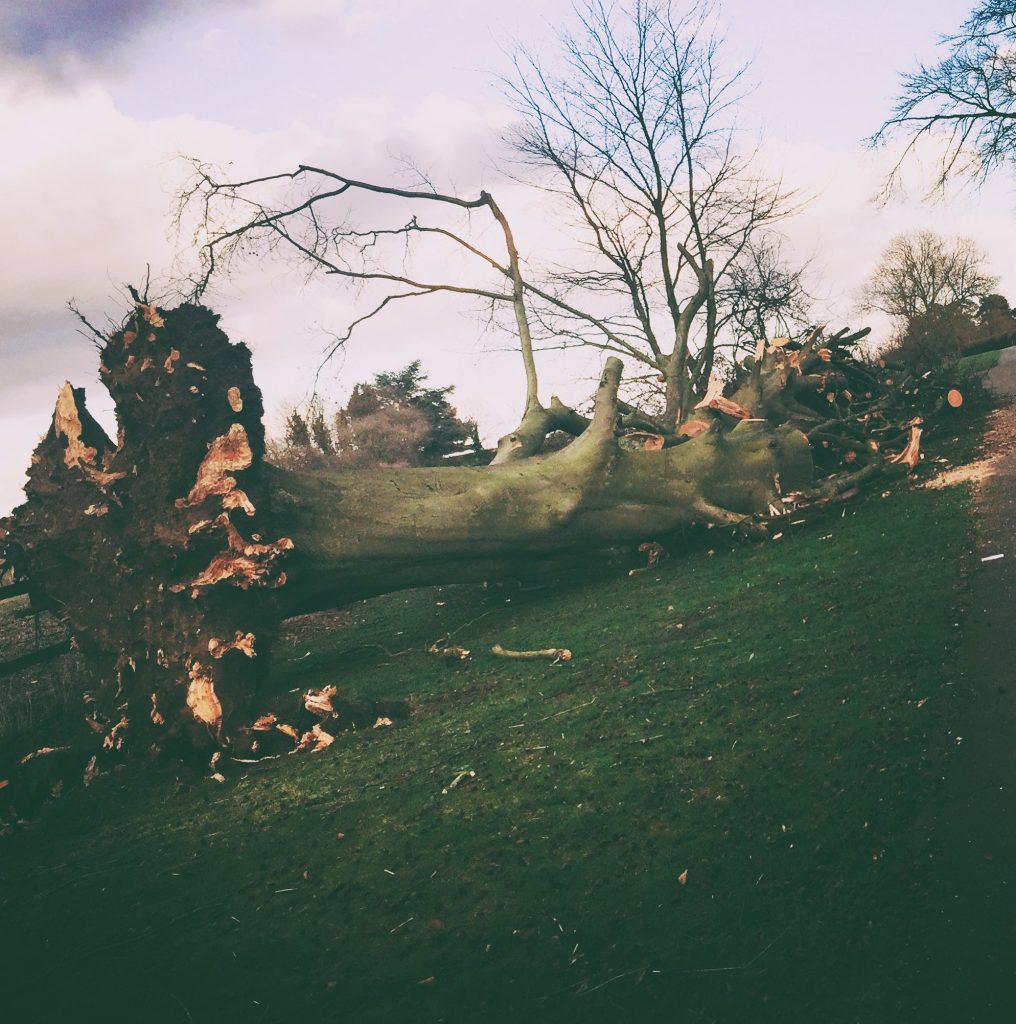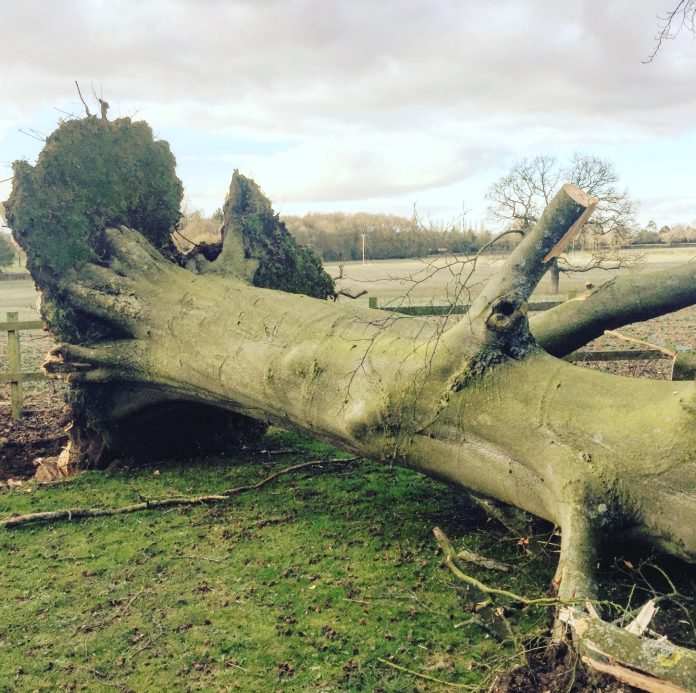Trees are a vital part of any garden, providing beauty, shade, and habitats for wildlife. However, during high winds, they can pose a hazard if they’re not structurally sound. Assessing a tree’s condition regularly can help prevent damage to your property and keep your garden safe. Here’s what to look out for when evaluating tree safety for windy weather. For large trees always get them inspected and dealt with by a professional
1. Inspect the Canopy
Signs to Watch For:
- Dead or Dying Branches: Brittle, leafless, or discolored branches are more likely to snap in strong winds.
- Uneven Growth: A lopsided canopy may indicate structural weakness or imbalanced weight distribution, increasing the risk of tipping.
- Crossing Branches: Branches rubbing against each other can weaken over time, making them susceptible to breakage.
Action:
- Remove dead or damaged branches, and consider thinning the canopy to reduce wind resistance.
2. Check the Trunk
Signs to Watch For:
- Cracks or Splits: Deep cracks, particularly where the trunk forks or at the base, are signs of internal weakness.
- Hollow or Decayed Areas: Cavities or areas of rot compromise the tree’s structural integrity.
- Leaning: A tree that leans suddenly or significantly is a red flag. A gradual lean might be less concerning but should still be monitored.
- Mushrooms or Fungi: Fruiting bodies growing on the trunk or roots can indicate internal decay.
Action:
- Consult a qualified arborist if you notice significant damage, rot, or a leaning tree.

3. Examine the Roots
Signs to Watch For:
- Exposed Roots: Roots pushed above the soil could mean the tree is shifting or losing its grip on the ground.
- Damaged Roots: Cuts or damage to roots from construction or garden work weaken the tree’s anchoring.
- Soil Heaving: Uplifted soil around the base of the tree can indicate recent movement, especially after strong winds.
Action:
- Protect roots from further damage and assess the tree’s stability with professional help.
4. Look at the Base
Signs to Watch For:
- Loose Bark or Wounds: Significant peeling bark or wounds around the base can indicate disease or structural issues.
- Cankers: Sunken or discolored areas on the trunk may point to infection, which can weaken the tree.
Action:
- Treat minor infections promptly and monitor for worsening signs. Severe damage may require removal.
5. Consider the Tree’s Location
Factors to Assess:
- Proximity to Structures: Trees close to homes, sheds, fences, or power lines pose a greater risk in high winds.
- Soil Type and Saturation: Waterlogged soil can weaken a tree’s anchoring, especially in clay-heavy areas.
- Nearby Trees: A falling tree can create a domino effect, especially in dense planting areas.
Action:
- Prune trees near structures and monitor soil conditions after heavy rains.
6. Assess for Previous Storm Damage
Signs to Watch For:
- Hanging Branches (Widowmakers): Broken but lodged branches can fall unpredictably during high winds.
- Old Wounds: Splits or breaks from past storms that haven’t healed properly can create weak points.
Action:
- Safely remove widowmakers and monitor old wounds for signs of rot or pest infestation.
7. Watch for Signs of Pests or Disease
Indicators:
- Borer Holes: Tiny holes in the bark suggest insect infestations that weaken the tree.
- Unusual Leaf Loss: Early or uneven leaf drop could indicate disease or stress.
- Discolored Leaves or Bark: Yellowing or blackening can be a sign of fungal infections.
Action:
- Treat minor infestations early and seek professional advice for severe cases.
When to Seek Professional Help
Some tree issues require an expert’s assessment. Call a certified arborist if:
- The tree is leaning significantly or shows signs of instability.
- You notice extensive decay, cracks, or fungal growth.
- You’re unsure about the tree’s health or structural integrity.
Proactive Tree Care to Minimize Risk
- Regular Pruning: Keeps the canopy balanced and reduces wind resistance.
- Health Checks: Annual inspections by a professional can identify problems before they become hazardous.
- Mulching and Watering: Encourage strong root growth by maintaining proper soil health.
- Tree Support: Install cables or braces to stabilize weak but otherwise healthy trees.
Final Thoughts
Trees are resilient but not invincible. Regular inspections, especially before and after high winds, can save you from costly damage and ensure your garden remains safe. By addressing minor issues early and seeking professional help when necessary, you’ll preserve the beauty and safety of your garden trees for years to come. For large trees it’s always best to consult a tree professional and to get them inspected regularily




